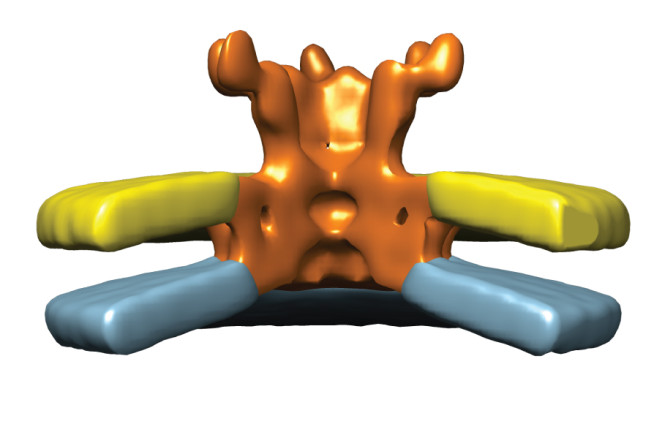Coronaviruses transform membranes of the infected cell into striking double-membrane vesicles (DMVs) that are associated with viral RNA synthesis. These replication organelles probably provide an optimized micro-environment for replication and a hiding place for viral replication intermediates from innate immune sensors. Viral RNA synthesized inside the DMVs needs to be exported to be either translated into new viral proteins or to be packaged into new virus particles. How this could be accomplished has been puzzling scientists for years, as coronavirus-induced DMVs appeared to be totally sealed compartments.
In this study we provide an answer to this topological conundrum. Using cellular cryo-tomography to analyze coronavirus replication,organelles in close to native conditions, we discovered that DMVs contain multiple copies of a hitherto unique viral molecular pore. This viral complex spans the two membranes of the DMVs and contains a central channel that would allow for RNA export to the cytosol. Six copies of a large coronavirus transmembrane protein (nsp3) form the core of this crown-shaped complex. Due to its likely key role in the coronavirus replication cycle, this molecular pore offers a new drug target to be explored in the quest for much needed strategies against coronaviruses.
This work is the result of the excellent and long-standing collaboration between the section Electron Micoscopy at CCb and the Molecular Virology group of Eric Snijder (medical Microbiology, LUMC). Collaborators in US (Davd Agard lab, UCSf) provided a new reconstruction algorithm and Kay Grünewald’s lab (Hamburg University, Germany) was key for data collection of the last data sets in the difficult coronavirus lockdown period.
Georg Wolff, Ronald WAL Limpens, Jessika C Zevenhoven-Dobbe, Ulrike Laugks, Shawn Zheng, Anja WM de Jong, Roman I Koning, David A Agard, Kay Grünewald, Abraham J Koster, Eric J Snijder, Montserrat Bárcena. “A molecular pore spans the double membrane of the coronavirus replication organelle” . Science. 2020. Online ahead of print, August 6.
https://doi.org/10.1126/science.abd3629
